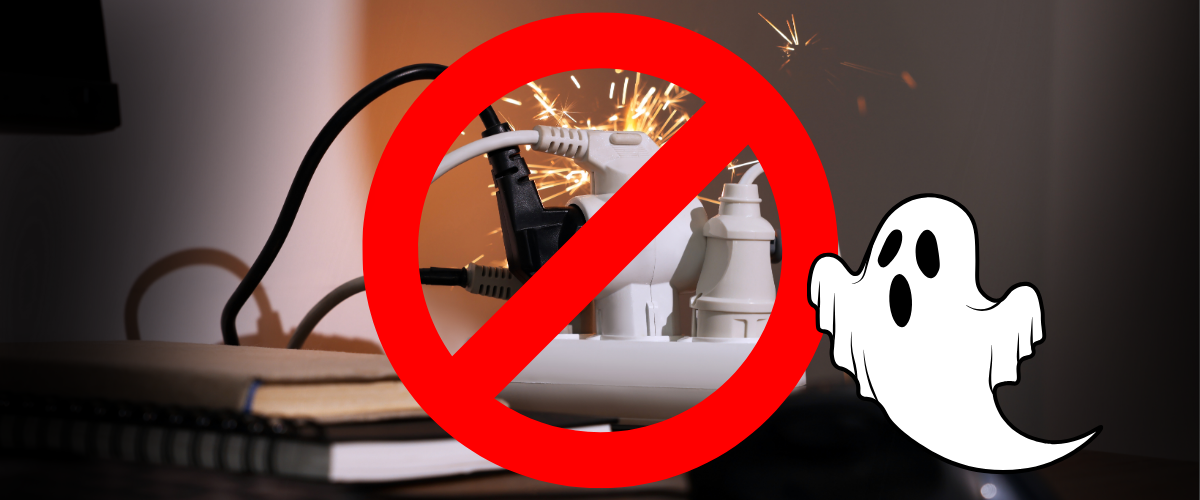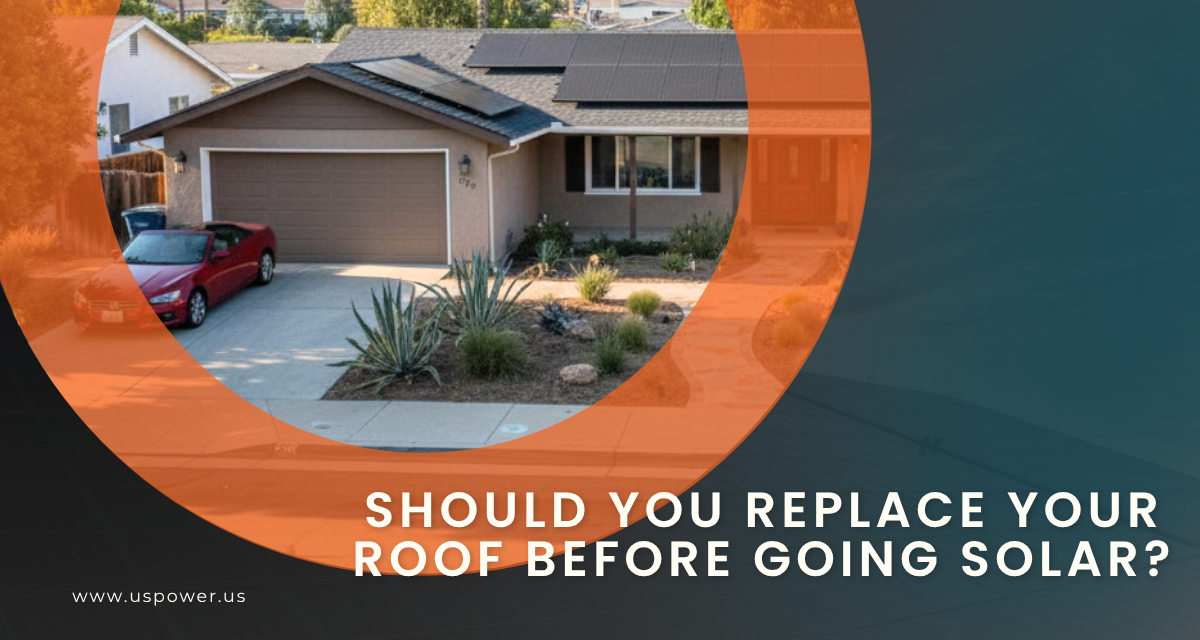How to Stop Phantom Loads and Lower Your Bills

Solar and Roofing Advisor
Stop phantom loads from silently inflating your electricity bills. Discover proven strategies to reduce wasted energy and save money on your home’s power.

Phantom loads—also known as energy vampires—are appliances and devices that draw electricity even when turned off. For Southern California homeowners, these hidden energy drains can cost hundreds of dollars per year. By identifying phantom loads and combining energy-saving practices with high-efficiency Qcells solar panels and battery storage from US Power, you can reduce your bills, gain energy independence, and make your home more efficient.
What Are Phantom Loads?
Phantom loads occur when devices continue consuming electricity while in standby mode or appearing “off.” Modern electronics often do not fully power down; instead, they remain ready to respond to remote controls, timers, or smart home commands.
Common sources of phantom loads include:
- Entertainment systems: TVs, cable boxes, DVRs, gaming consoles, and soundbars
- Home office equipment: Desktops, monitors, and printers
- Kitchen appliances: Coffee makers, microwaves, and devices with digital clocks
- Smart home devices: Security cameras, voice assistants, connected thermostats
- Chargers and adapters: Phone, laptop, and tablet chargers left plugged in
While each device may consume only a small amount of energy, the cumulative effect across a home can be significant.
How Much Are Phantom Loads Costing Southern California Homeowners?
Standby power is estimated to account for 5–10% of residential energy use, according to the U.S. Department of Energy (DOE). In Southern California, where electricity rates are among the highest in the country—averaging 31.58 cents per kWh in 2025—phantom loads can quietly cost homeowners hundreds of dollars each year.
For example, a typical household using approximately 10,800 kWh per year may spend around $238 annually powering devices that aren’t actively in use. This number can vary depending on:
- The number and type of plugged-in devices
- Appliance age and energy efficiency
- Local electricity rates
- Smart home usage and standby settings
Reducing phantom loads is an easy way to reclaim this lost money.
Identifying Phantom Loads in Your Home
To effectively reduce phantom loads, homeowners first need to identify which devices are consuming energy unnecessarily. Some practical methods include:
- Visual indicators: Devices with LED lights, clocks, or displays while “off” are using electricity.
- Check for warmth: Chargers or adapters that are plugged in but not connected to a device may feel slightly warm, indicating power draw.
- Use power meters: Plug-in meters like Kill-A-Watt measure the exact energy consumption of individual devices.
- Whole-home energy monitors: Devices like Sense connect to your electrical panel and track energy use across the home, helping identify phantom loads and overall consumption patterns.
- Professional energy audits: Many Southern California utilities or third-party auditors can perform a home energy assessment to identify hidden drains and recommend solutions.
Reducing Phantom Loads: Practical Steps
After identifying energy vampires, homeowners can take several effective steps to lower energy waste:
- Unplug devices when not in use: Chargers, small kitchen appliances, gaming consoles, and seasonal equipment can be disconnected to prevent standby consumption.
- Use smart power strips: These strips automatically cut power to multiple devices when the main unit is off, follow scheduled timers, or respond to motion sensors.
- Replace old appliances: ENERGY STAR-certified appliances have lower standby power and higher efficiency, helping to reduce phantom load consumption.
- Adjust device settings: Turn off “always listening” features on smart assistants, disable instant-on modes for TVs and gaming consoles, and modify sleep/standby settings on computers and printers.
Implementing these measures can reduce phantom load consumption significantly, saving hundreds of dollars annually for Southern California homeowners.
Why Reducing Phantom Loads Is Especially Important in Southern California
High electricity rates make phantom loads more costly in California than in many other states. Even small, continuous energy draws can result in substantial waste. Additionally, utilities like Southern California Edison or PG&E often adjust rates based on demand and time of use, which means energy waste can be more expensive during peak periods.
By addressing phantom loads, homeowners can lower monthly bills immediately. More importantly, reducing unnecessary energy usage lays the foundation for more efficient solar adoption, ensuring homeowners make the most of every kilowatt produced.
Solar Energy: The Ultimate Solution to Phantom Loads and High Bills
While reducing phantom loads is critical, it only addresses part of the energy cost problem. Installing a solar energy system with battery storage provides long-term solutions:
- Generate your own electricity: Solar panels reduce reliance on the grid and offset high electricity costs.
- Store excess energy: Battery storage allows homeowners to use solar energy during evenings or power outages.
- Protect against rate increases: Solar provides predictability in monthly energy costs and shields against future utility hikes.
At US Power, we specialize in designing and installing solar systems for Southern California homeowners. Our exclusive partnership with Qcells provides access to American-made, high-efficiency panels with factory-direct pricing. Qcells panels are engineered for durability and peak performance, ensuring maximum energy generation for your home.
How Solar and Phantom Load Reduction Work Together
Combining phantom load reduction with solar maximizes both savings and efficiency. Minimizing standby power ensures more solar-generated electricity is used effectively rather than wasted. This leads to:
- Faster payback on solar investment
- Reduced electricity bills from day one
- Greater energy independence and reliability
- Lower carbon footprint for the home
For Southern California homeowners, this combination is especially effective due to high local electricity rates, strong sunlight, and available federal incentives, including the 30% Residential Clean Energy Credit in 2025.
Actionable Steps for Homeowners
To reduce phantom loads and maximize solar benefits, follow these steps:
- Identify and reduce phantom loads using unplugging, smart strips, or energy monitors.
- Replace old appliances with ENERGY STAR-certified products.
- Adjust device settings to minimize standby consumption.
- Schedule a free solar consultation with US Power to explore Qcells panels and battery storage options.
- Leverage federal incentives to reduce upfront solar costs and accelerate payback.
By taking these steps, homeowners can reclaim hundreds in wasted electricity, generate clean energy, and protect their homes from future rate increases.
Conclusion
Phantom loads are a hidden cost in nearly every Southern California home, silently draining electricity and increasing bills by hundreds annually. By identifying and reducing these energy vampires, homeowners can save money immediately.
Pairing these efforts with high-efficiency Qcells solar panels and battery storage from US Power offers a long-term solution: predictable bills, energy independence, and sustainable, efficient electricity for years to come.
Take control of your energy today.
Reduce phantom loads and explore US Power’s solar solutions to lower your bills, maximize efficiency, and secure your home’s energy future.
Related Articles
Our Related Blogs
Everything homeowners need to know about QCells solar panels and their benefits.
Learn how energy management helps homeowners save money and stay efficient.
Plan your 2025 solar installation right—learn if your roof needs replacement first.
Our Solar and Roof Brand Partners








We empower communities and businesses to harness clean, renewable solar energy solutions that drive sustainable growth.
Ready to Own Your Power? Call us today!
818-650-8010
Copyright © 2025 US Power - Axia by QCells. All Rights Reserved.
Privacy is important to us, so you have the option of disabling certain types of storage that may not be necessary for the basic functioning of the website. Blocking categories may impact your experience on the website.
Essential
These items are required to enable basic website functionality.
Personalization
These items allow the website to remember choices you make (such as your user name, language, or the region you are in) and provide enhanced, more personal features.
Marketing
These items are used to deliver advertising that is more relevant to you and your interests.
Analytics
These items help the website operator understand how its website performs, how visitors interact with the site, and whether there may be technical issues.
We and our third-party partners use cookies and other technologies to enhance and track your experience on this site, conduct analytics, and personalize marketing to you. By using the site, you agree to our use of these technologies, including recording and monitoring your interactions with the site.
Get an instant solar estimate using satellite!










